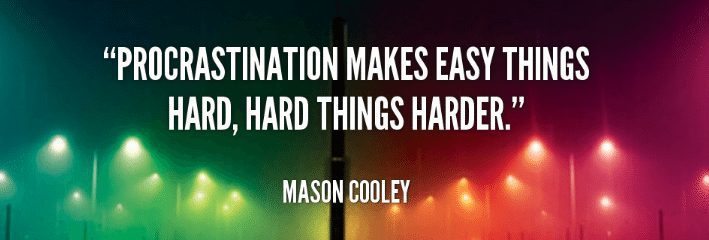9 Easy Ways to Get New Ideas
An easy way to generate a lot of ideas is to apply a checklist of nine creative-thinking principles that were first formally suggested by Alex Osborn and later arranged into the following mnemonic SCAMPER.
S = Substitute?
C = Combine?
A = Adapt?
M = Magnify? = Modify?
P = Put to other uses?
E = Eliminate?
R = Rearrange? = Reverse?
What is SCAMPER
SCAMPER is based on the notion that everything new is some addition or modification of something already existing.
You take a subject and change it into something else.
Here are some examples:
- Drilled petroleum becomes chemical feedstock which becomes synthetic rubber becomes automobile tires
- Natural gas becomes polyethylene and becomes milk jugs.
- Mined ore becomes metal becomes wire becomes parts of a motor
You can take anything that exists and change it into a new idea.
The blueprint for using SCAMPER is:
(1) Isolate the subject you want to think about.
(2) Ask the SCAMPER questions about each step of the subject and see what new ideas emerge.
(3) For every new idea you discover, ask, “How can…?” “What else…?” “How else…?”
(4) List and evaluate the ideas.
Suppose you wanted to improve the ordinary paperclip.
You would start looking for ideas by asking:
- What can be substituted in the clip?
- Is there something you can combine the clip with to make something else?
- What can I adapt to the clip?
- How can I change the clip?
- What can I magnify or add to the clip?
- Are there other uses I can find for the clip?
- Is there something that can be eliminated from the clip?
- What is the reverse of a clip?
- Could another rearrangement of the clip be better?
One manufacturer substituted plastic for metal, added color and produced plastic clips in various colors so that clipped papers could be color-coded, thereby finding another use for clips.
Think about any subject, from improving your productivity to reorganizing your organization, and apply the AScamper@ checklist of questions.
You find ideas pop up almost involuntarily, as you ask:
Substitute something?
The principle of substitution is a sound way to develop alternative ideas to anything that exists.
Think up ways of changing this for that and that for this.
The scientist, Paul Ehrlich, kept substituting one color for another—well over 500 colors—until he found the right dye to color the veins of laboratory mice.
You can substitute things, places, procedures, people, ideas, and emotions.
Ask:
Can you substitute something?
Who else?
What else?
Could the rules be changed?
Is there a different ingredient?
Other material?
Another power?
Another place?
A different approach?
What else instead?
Could there be another part instead of this?
Combine it with something else
Much of creative thinking involves combining previously unrelated ideas or subjects to make something new.
This process is called synthesis and is regarded by many experts as the essence of creativity.
Gregor Mendel created a new scientific discipline, genetics, by combining mathematics and biology.
Ask:
- What can be combined?
- Can we combine purposes?
- How about an assortment? A blend? An alloy? An ensemble?
- Combine units and materials? What other article could be merged with this?
- How could we package a combination?
- What can be combined to multiply possible uses?
- Combine appeals?
Adapt something to it
One paradox of creativity is that to think originally, we must first familiarize ourselves with the ideas of others.
Thomas Edison put it this way:
“Make it a habit to keep on the lookout for novel and interesting ideas that others have used successfully. Your idea needs to be original only in its adaptation to the problem you are working on.”
Ask:
- What else is like this? Are there other ideas does it suggest?
- Does the past offer a parallel?
- What could I copy? Whom could I emulate?
- Can I incorporate another idea?
- What other process could be adapted? Is there anything else that could be adapted?
- What different contexts can I put my concept in?
- Are there ideas outside my field I can incorporate?
Magnify it
An easy way to create a new idea is to take a subject and add something to it.
Japanese engineer Yuma Shiraishi made the home VCR possible by figuring out how to lengthen videotapes so they would be long enough for feature-length movies.
Ask:
- What can be magnified, made larger, or extended?
- Can something be exaggerated? Overstated?
- What can be added? More time? Stronger? Higher? Longer?
- How about greater frequency? Extra features? What can we duplicate?
- What can add extra value?
- How can I carry it to a dramatic extreme?
Modify it
What can be modified?
Just about any aspect of anything.
The hub-and-spoke transportation system that makes Federal Express work was a feature of at least three air freight services as early as 1930.
Fred Smith modified the system’s dimensions, process, and purposes and turned an old idea into an elegant concept.
Ask:
- How can this be altered for the better? What can be modified?
- Is there a new twist?
- Change meaning, color, motion, sound, odor, form, shape? Change name?
- What changes can we make to the plans? In the process? In marketing? Other changes?
- What other form could this take? Is there a different package? Can we combine the package with the form?
Put it to some other use
A subject takes its meaning from the context in which you put it.
Change the context, and you change the meaning.
George Washington Carver, botanist, and chemist, discovered over 300 different uses for the lowly peanut.
Ask:
- What else can this be used for?
- Are there new ways to use it as is?
- Other uses if modified?
- What else can be made from this?
- Another extension? Different markets?
Eliminate
Sometimes subtracting something from your subject yields new ideas.
Trimming down ideas, objects, and processes may gradually narrow the subject down to its necessary part or function or spotlight a part appropriate for some other use.
Ask:
- What if this were smaller? Understate?
- Can I omit something? Delete? Subtract? What’s unnecessary?
- Should I divide it? Split it up? Separate it into different parts?
- Streamline? Make miniature? Condense? Compact?
- Can we eliminate the rules?
Rearrange it into something else
Creativity consists largely of rearranging what we know to discover what we do not know.
Rearrangement usually offers countless alternatives for ideas, goods, and services.
A baseball manager, for example, can shuffle his lineup 362,880 times.
Ask:
- What other arrangement might be better?
- Interchange components?
- Another pattern? A new layout? Another sequence? Change the order?
- Transpose cause and effect?
- Change pace? Change schedule?
Reverse it to see what happens
Reversing your perspective opens your thinking.
Look at opposites, and you’ll see things you normally miss.
Ask, “What is the opposite of this?” to find a new way of looking at things.
The historical breakthroughs of Columbus and Copernicus were the opposites of the current beliefs of their day.
Ask:
- What are the opposites?
- What are the negatives?
- Can I transpose positive and negative?
- Should I turn it around? Up instead of down? Down instead of up? Consider it backward?
- Reverse roles?
- Do the unexpected?
Even the hot dog, as we know it, results from the right idea-spurring question being asked at the right time.
Antoine Feutchwanger sold sausages at the Louisiana Exposition in 1904.
He first sold them on plates, but this proved too expensive.
He then offered white cotton gloves and the franks to prevent customers from burning their fingers.
The gloves also were expensive, and customers walked off with them.
Antoine and his brother-in-law, a baker, sat down and brainstormed.
“What could we add (MAGNIFY) to the frankfurter that would be inexpensive and prevent people from burning their fingers?”
His brother-in-law said: “What if I baked a long bun and slit it to hold the frank?”
“Then you can sell the franks, and I can sell you the buns. Who knows, it might catch on.”
What new ideas will you come up with?
Start using this framework today and see what new ideas you arrive at!
There is no such thing as a dumb idea, either.
Remember, brainstorming is half the battle.
Tell us your thoughts in the comment section below.
If you found this article helpful, please click the share button.
We hope you bring your new ideas to light!











